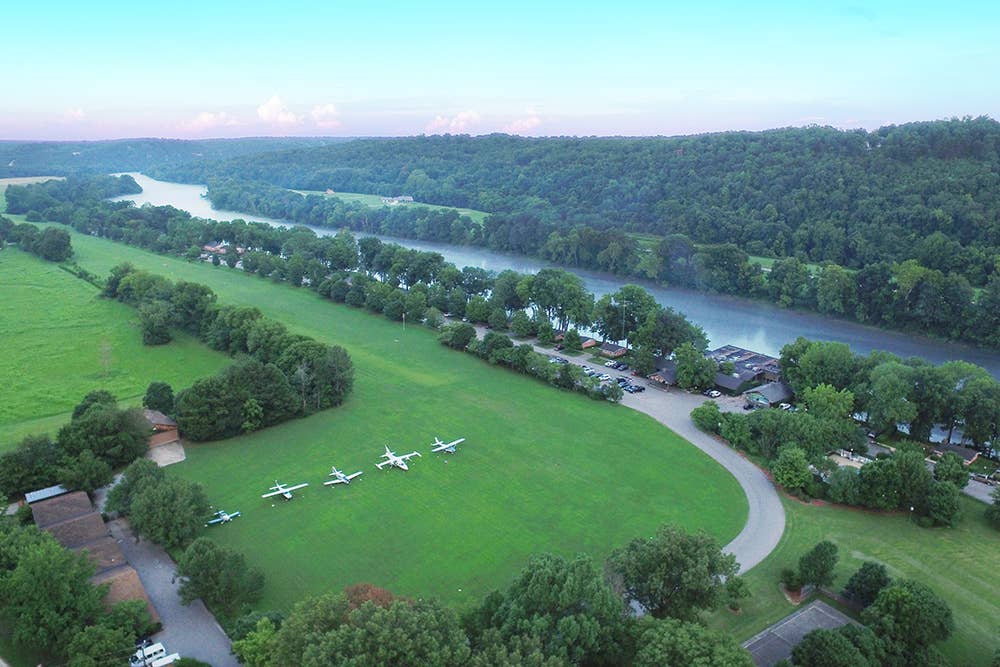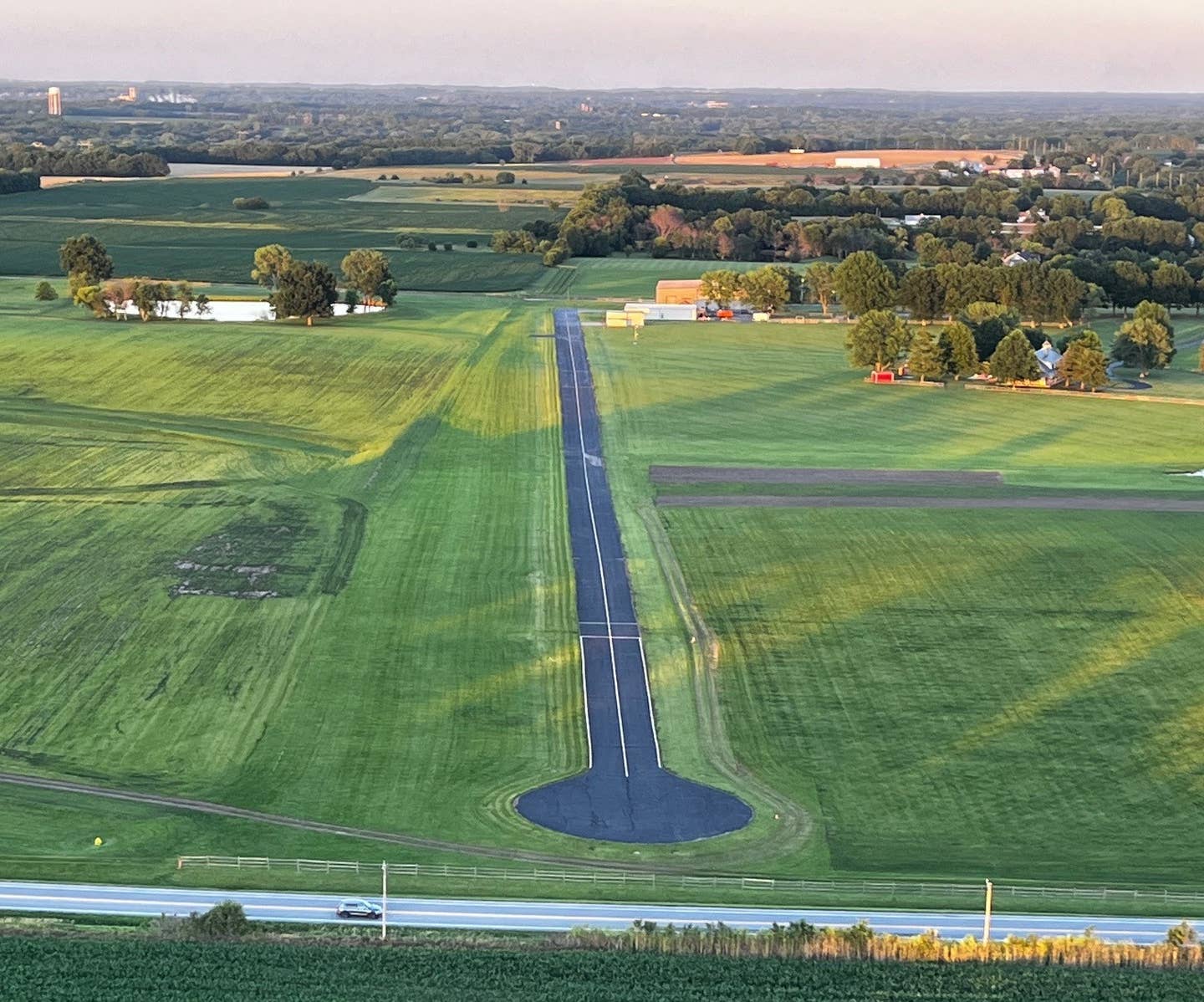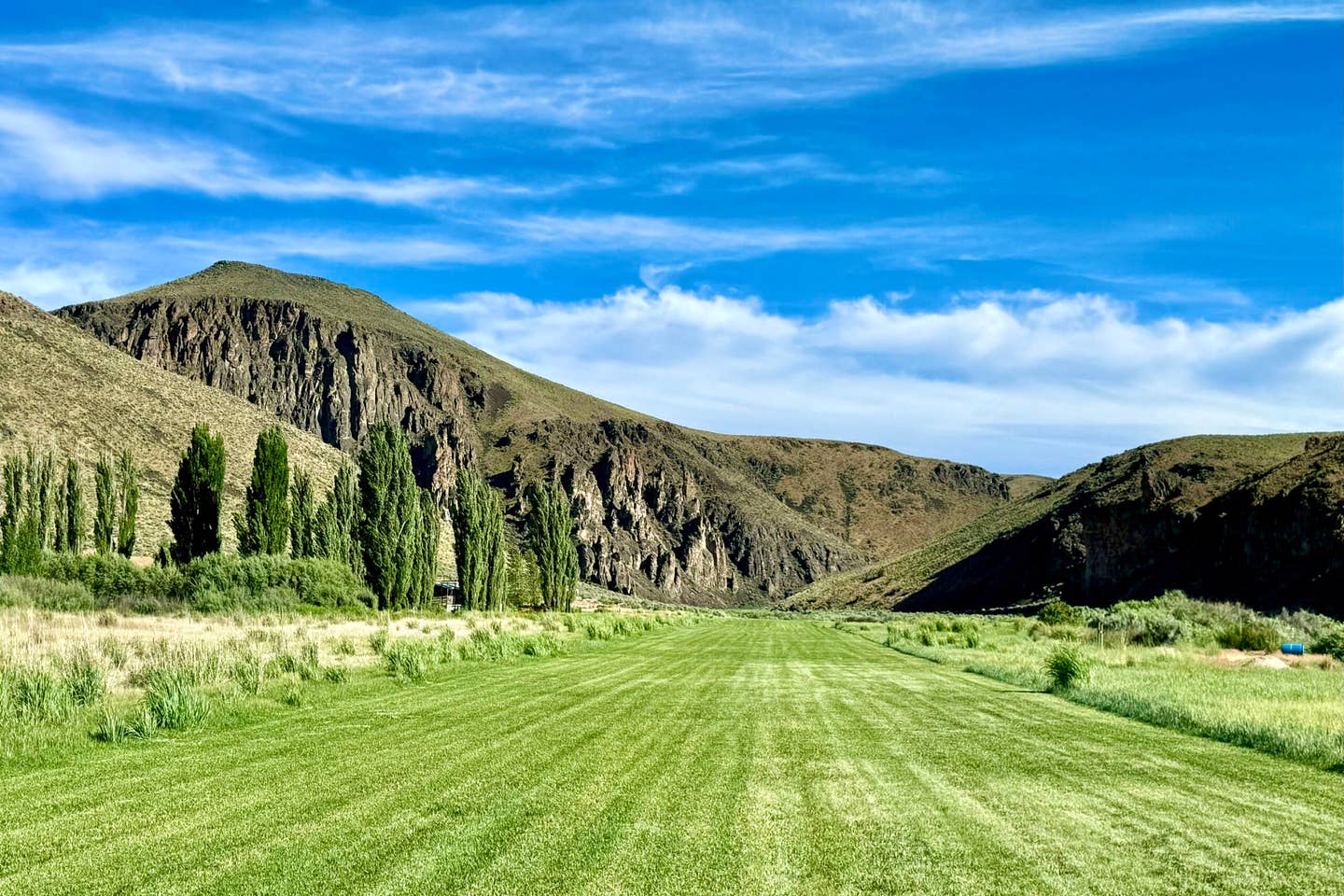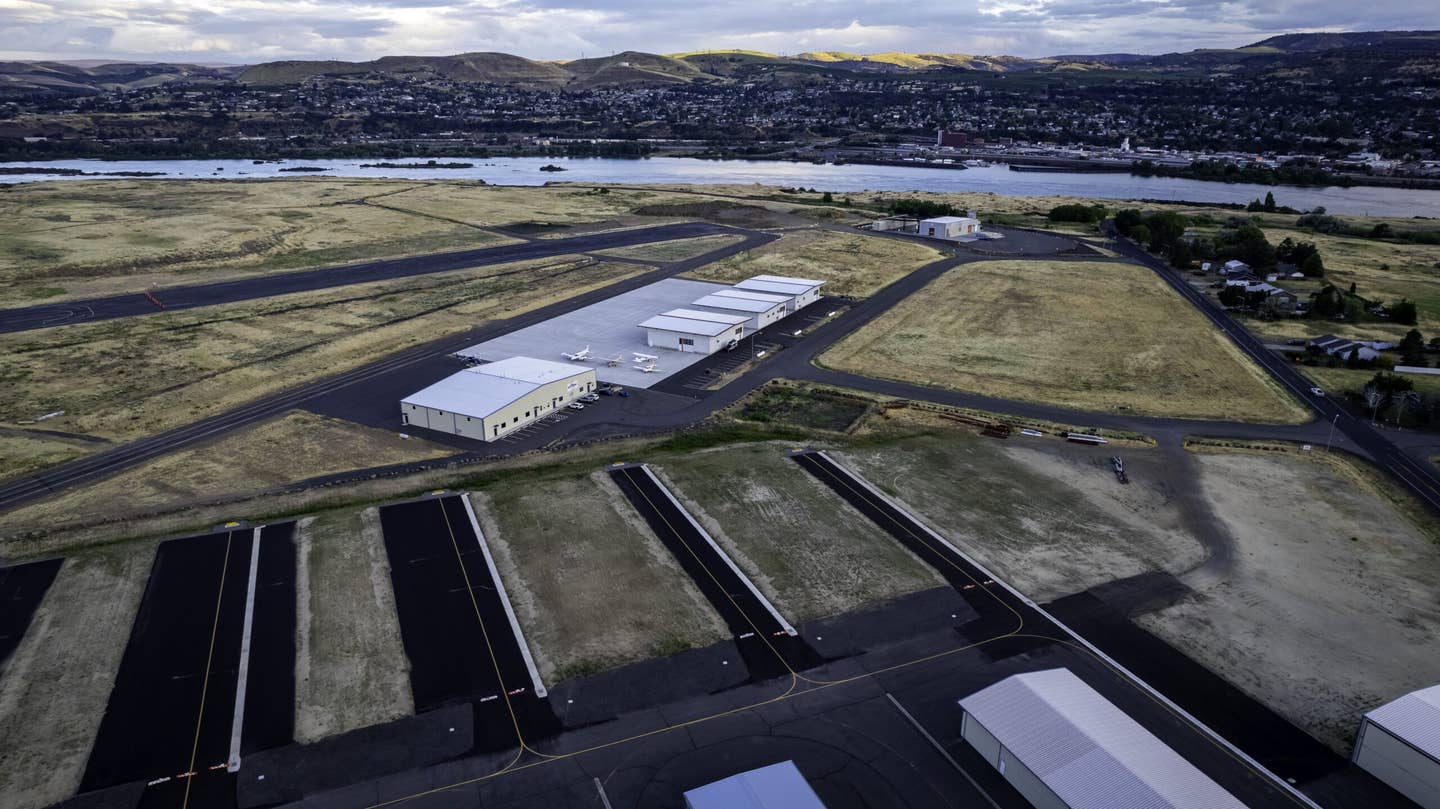Arkansas Resort Known for Fishing and Its Grass Runway
Gaston’s White River Resort caretaker says maintaining that Bermuda is tough, but well worth it.

The grass airstrip at Gaston’s started at 1,200 feet and has expanded to 3,200 feet. [Courtesy: Gaston’s White River Resort]
Those who have flown GA in the south central U.S. have undoubtedly heard of Gaston’s White River Resort (3M0). Next to the White River, there sits a 3,200 ft by 55 ft grass runway. This airstrip serves as a gateway for aviators looking for an award-winning meal, an immaculately clean place to sleep, or a great place to fish.
This turf strip was added to attract more visitors to travel to Gaston’s, which is picturesquely located within the Northwestern Arkansas Ozarks.
Clint Gaston, the family-owned resort’s current caretaker, knows its history well.
“Gaston’s was founded in 1958 by Al Gaston, my great-grandfather. At that time, we had six cottages with around 20 acres. After Al passed, my grandfather, Jim, took over and was able to grow it to 79 accommodations, with a full-service restaurant overlooking the White River, a 3,200-foot-long airstrip, swimming pool, state of the art dock, gift shop, nature trails, and more.”
Jim passed away in 2015, leaving Clint to continue the family’s legacy on the White River.
A Work in Progress
Gaston says that the airstrip has been extended several times throughout the resort’s 64-year history.
“The airstrip has always been here [since Gaston’s first opened] but started out at 1,200 feet. It then grew to 2,400 feet and grew once again to 3,200 feet.”
Today, the airstrip sits adjacent to the cottages, restaurant, and other resort amenities, which overlook the 722-mile-long river that is fed by Bull Shoals Lake to the north. The river consistently stays around fifty-five degrees Fahrenheit. And it’s this waterway with its world-class rainbow, brown, cutthroat, and brook trout fishing that visitors primarily trek to Gaston’s for.
Some guests drive to the resort in Lakeview, Arkansas, which is approximately 120 miles (by road) to the East of Fayetteville and 80 miles southeast of Branson, Missouri. But, for many other Gaston’s visitors, their time begins when their wheels touch down on the well-maintained Bermuda grass.
“Everyone loves the airstrip and enjoys it. Many talk about how well it is kept up with,” Gaston says.
Unsurprisingly though, there is a fair amount of routine and special landscaping work required to keep up with maintaining the airstrip. All of this work is performed by Gaston’s staff and consists of frequent mowing, preventative herbicide application, as well as small mammal control.
Gaston says that most of the work falls into the following categories.
“[These tasks are] mainly killing certain weeds and grasses to prevent them from taking over. We are always battling mole tunnels and stay on top of them all year long. As needed, we will roll the strip to help level out any imperfections.”
Unsurprisingly, mowing takes up a considerable percentage of the time spent maintaining the airstrip for aircraft operations. They use a six-foot-wide flail mower for the runway surface itself and then two large zero turn mowers for the airplane parking area.
Altogether, it will generally take about eight hours to completely mow these surfaces. The frequency of this full day of mowing depends on the time of year and weather.
“During peak season when the grass is growing well, we mow it once a week, sometimes more depending on the rate of growth due to heavy rainfall,” Gaston says.
Rain and the Runway
And regarding this rainfall and its potential to wreak havoc on pilots’ plans to land on the runway, Gaston notes there is little to worry about. “The strip itself drains water very well, but the tie-down area has a few low spots that will hold water after a heavy rain. It typically dries up after a day with no rain.”
Many types of aircraft have flown in, with the pilots enjoying the fruits of the Gaston’s team’s work to upkeep the strip.
“The largest aircraft we’ve ever had in here was a DC-3,” Gaston says. “We see Cessna Grand Caravans, Kodiaks, Pilatus PC-12s, and many twin engine planes on a regular basis. We also get a lot of helicopter traffic.”
Pilots must navigate trees, powerlines, and other obstacles to successfully land at the resort’s airstrip, which has both 100LL for sale and tie-downs. Clint provides some advice for those looking to fly in for the first time.
“Talk to a fellow pilot who has flown in and out of our strip or give us a call. There are some videos on YouTube that will give pilots an idea of the approach and takeoff.”
For instance, two videos of the long list covering the subject are “Gaston’s Approach to Landing - 4 GoPros” and “Gastons, AR (3M0) - Approach and Landing.” The first was uploaded by a channel entitled The Cardinal Pilot, which provides a point-of-view look into flying to the resort in a Cessna Cardinal. The uploader self-described the video, “Watch as I navigate the Gaston's approach, flying it exactly as the older, more wise locals have told me.”
The latter video is from the Airplane Academy, which notes the following about Runway 6/24 and a Cessna 182’s operations into the airstrip. “Be sure to mind the power lines in the base leg when landing to the west.”
So, whether you consider flying in for Sunday brunch, a week of fishing, or anything in between, it’s important to walk through flying to Gaston’s before physically doing it. These resources and others are important to getting a clearer picture of the airstrip and the challenges of operating at it.
Having spent much of his life at the resort, either working or enjoying it, Clint has seen it from nearly all angles. But his time on the ground there has far outnumbered seeing Gaston’s from the sky. That said, he intends on spending more time flying around the area and into the airstrip.
Clint is currently a student pilot, diligently working towards achieving his private pilot certificate. “Once I get the written finished, I intend to fly daily for several weeks to get it all knocked out while it’s fresh on my mind.”

Subscribe to Our Newsletter
Get the latest FLYING stories delivered directly to your inbox






